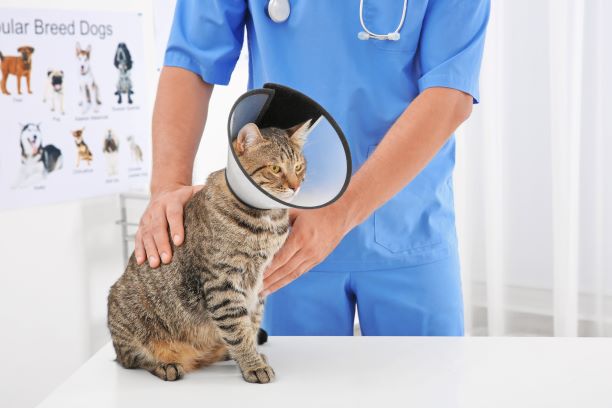
Polycystic kidney disease (PKD) is one of those rare conditions that occurs in several different species, including humans, dogs, and cats. Unfortunately, because cats are so much better than other species at hiding their discomfort, PKD in cats often goes unnoticed until it's too late.
Find out what PKD is, how to recognize it, and what you can do to help your kitty before it's too late.
What Is PKD in Cats?

Feline polycystic kidney disease – otherwise known as PKD -occurs when small sacs develop in the kidney and fill with liquid. Overtime, these sacs – called cysts – multiply and eventually begin to disrupt normal kidney function.
If left untreated, PKD can lead to kidney failure, which can be fatal.
Unfortunately, there is no external cause that pet parents can control for, such as environment, diet, or level of exercise. Rather, polycystic kidney disease in cats is caused by a genetic anomaly. There are some feline breeds that are more at risk for developing chronic kidney disease like PKD than others. Some cats are more likely to suffer from this genetic marker:
- Persians
- Himalayans
- British Shorthairs.
Because its cause is genetic, kittens are born with the condition and the cysts are present from birth. However, it usually takes several months for the condition to develop and be diagnosed.
Tired of your home smelling like you have a cat?
15% off PrettyLitter
Try it today Use code: PRETTYBLOG
Signs & Symptoms
Because PKD in cats affects the function of the kidneys, it often looks like other forms of feline kidney disease. Symptoms of PKD in cats include:
-
Increased thirst and drinking far more water than usual
-
Increased frequency of urination
-
Decreased appetite
-
Nausea or vomiting
-
Weight loss
-
Lethargy
In the most advanced stages, "it’s possible for the sacs to become so large and numerous that you can actually see the kidney’s outline when an affected cat is lying on its back," says Richard Goldstein, DVM, associate professor of small animal medicine at Cornell University’s College of Veterinary Medicine.
PKD in cats develops at widely different rates. While some cats may begin to show symptoms early in life, other cats may be senior citizens before they ever show signs or having abnormalities in renal function.
That's why it's incredibly important to get your little one screened for PKD if you suspect she may be at risk.
Diagnosis, Treatment & Maintenance

PKD in cats is caused by an abnormal gene. Genetic testing can help you determine if your cat is predisposed to this lethal health problem.
Screening
Thankfully, pet DNA test kits are becoming increasingly popular, which also makes the more affordable.
For example, Basepaws' CatKit offers DNA testing for cats that includes a PKD screening for $95 (and they often run sales! At the time of this writing, their CatKit is on sale for $75). Many companies also offer lifetime updates, which means anytime they develop new tests, they'll retest your kitty for free and update your online profile with the results to see if your cat has developed the PKD gene.
Diagnosis

However, if your cat's DNA test results do come back as positive for PKD, the results won't be able to tell you the severity of your cat's condition or how it's progressing. For that, you'll need to see your veterinarian for an ultrasound exam.
Treatment & Maintenance
Sadly, there is no cure or specific treatment for feline polycystic kidney disease. Rather, treatment plans are usually designed around monitoring the condition and managing the symptoms to make your kitty as comfortable and happy as possible.
If your cat does have PKD, there are several things you can do to monitor and manage your fur baby's condition:
-
Talk with your vet and put together a care plan. This usually includes scheduled visits to keep tabs on how the cysts are developing and adjustments to other management techniques.
-
Diet changes. Many veterinarians recommend a specific diet for cats with PKD and other chronic kidney disease.
-
Fluid therapy. Potassium supplements or IV fluids may help your cat's kidney function a bit better.
-
Medication. While there is no specific treatment for PDK, your vet may prescribe certain medications to help treat the symptoms of the disorder.
-
Use PrettyLitter. If your PrettyLitter changes color, it may be a sign that your cat's kidneys are not working as they're supposed to, which means it's time to visit the vet – stat!
-
Surgical draining. In some cases, your vet may suggest surgically draining the cysts of fluid to help relieve the strain on the kidneys. However, this is a temporary solution as the cysts will eventually fill back up.
Have more questions about feline PKD or other health conditions? Let us know in the comments below and we'll do our best to find you answers.
----
Don't forget to follow us on Instagram: @prettylittercats
----
Delivered straight to your front door, every month. We’ll even pay your shipping.
For a limited time only, get 20% off your first PrettyLitter order. Enter code “LOVE20” at checkout. Redeem Now!

Follow Us